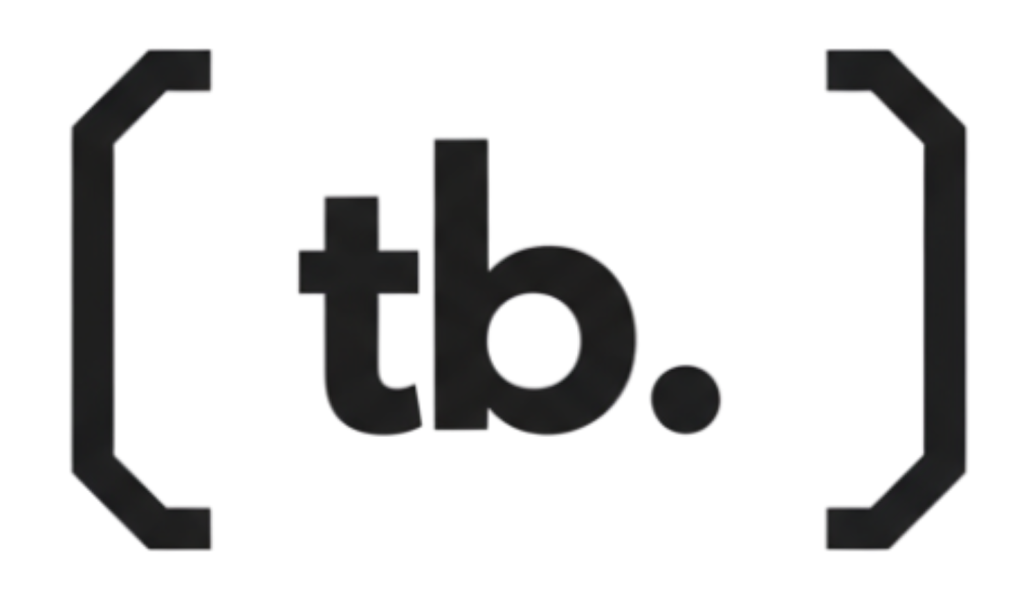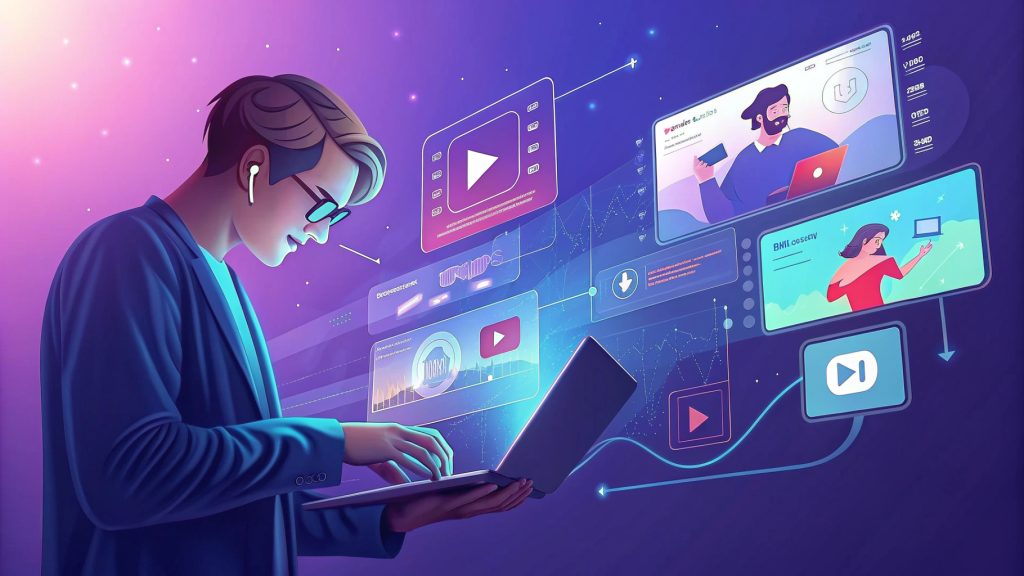Master the explosive world of AI video creation and turn your ideas into viral sensations with the most powerful tools available in 2025.
The video content landscape has undergone a seismic transformation. AI video generators are now experiencing explosive growth, fundamentally changing how creators, marketers, and businesses produce engaging content. With platforms like TikTok, Instagram Reels, and YouTube Shorts dominating social media, the ability to create scroll-stopping videos quickly and efficiently has become a competitive necessity. This comprehensive guide will equip you with everything you need to harness AI video generators to create viral content that captivates audiences and drives real results.
What Are AI Video Generators and Why They Matter
AI video generators are sophisticated tools powered by artificial intelligence that transform text prompts, images, or audio into polished video content within minutes. These platforms leverage advanced machine learning models, including diffusion models and large language models, to automate the traditionally labor-intensive video production process.
The explosive growth of AI video technology stems from several key advantages. Traditional video production requires expensive equipment, professional editing skills, and significant time investment. AI video generators democratize content creation by eliminating these barriers, allowing anyone with an idea to produce professional-quality videos. Traffic to leading platforms like Runway has reached 14.9 million monthly visitors, signaling mainstream adoption.
For content creators with video production backgrounds, AI tools amplify existing skills rather than replace them. They handle repetitive tasks like scene generation, voiceover synthesis, and basic editing, freeing creators to focus on storytelling, strategy, and creative direction.
The Most Powerful AI Video Generators in 2025
Understanding which tools excel at specific tasks is crucial for maximizing your viral content potential.
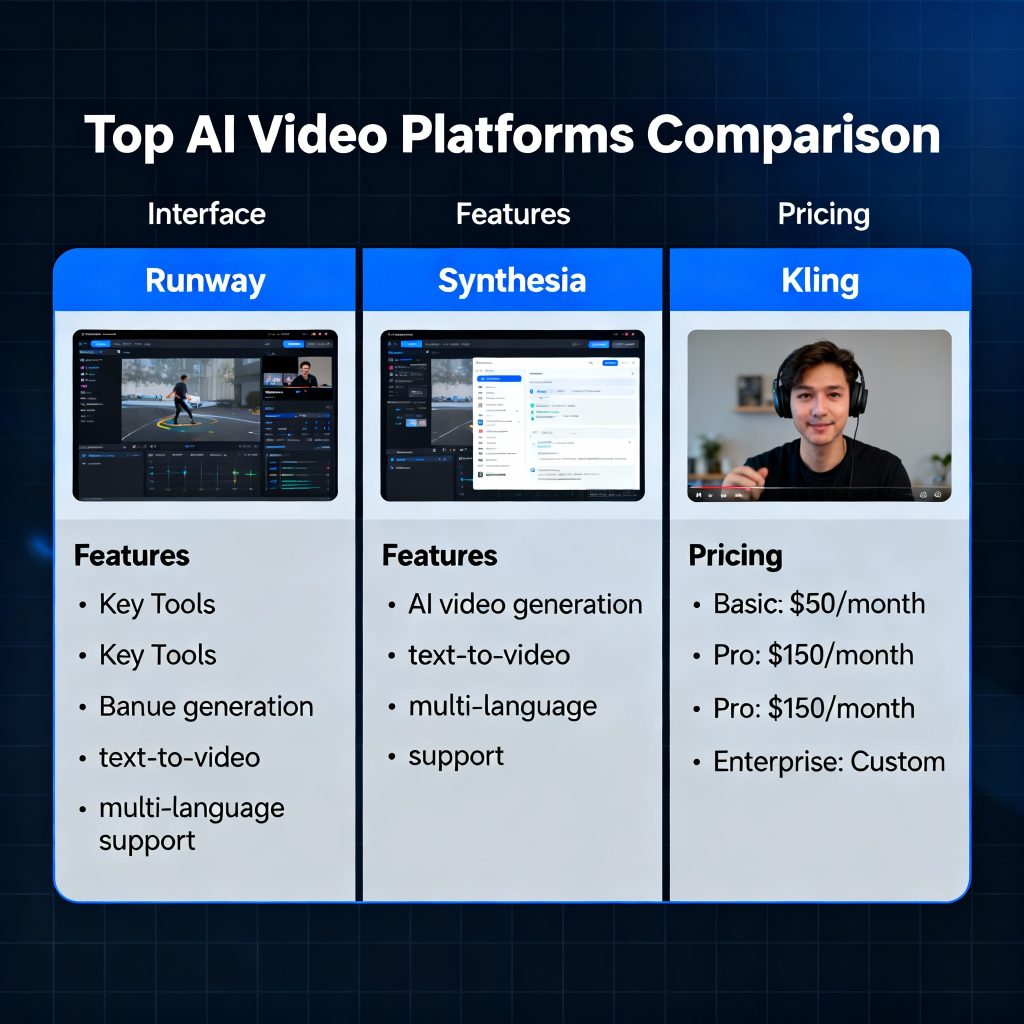
Cinematic Video Generation
Runway Gen-4 stands as the overall best AI video generator for most uses. It offers comprehensive capabilities including text-to-video, image-to-video, and video-to-video generation. The Gen-4 model delivers impressive consistency across multiple shots, addressing a common criticism of AI-generated content. Runway provides specific in-shot editing tools and motion brushes that give creators precise control over generated content. Pricing starts at $12 per month for the Standard plan with 625 credits, making it accessible for serious creators.
AI Avatars and Talking Head Videos
Synthesia dominates the AI avatar and talking head video space. With over 230 digital avatars and support for 140+ languages, it’s the go-to platform for training videos, explainer content, and corporate communications. The platform automatically generates voiceovers with realistic AI voices that grasp emotional context. Synthesia’s pricing begins at $18 per month for the Starter plan, offering 120 minutes of video annually.
HeyGen specializes in realistic AI avatars with real-time conversation capabilities. The platform supports translation into over 175 languages and dialects, making it invaluable for global content strategies. Interactive avatars can have real-time conversations, effectively acting as video chatbots. The Creator plan costs $24 per month with unlimited videos up to five minutes each.
Photorealistic and Budget-Friendly Options
Kling AI excels in photorealism and offers generous creative features. The platform stands out with its start and end image options, allowing precise control over video sequences. Kling supports videos up to 10 seconds by default, with an extend feature enabling clips up to three minutes. The lip-sync capabilities and MochiMochi effects have created viral moments across social platforms. Pricing starts at just $6.99 per month for 660 credits, making it one of the most budget-friendly professional options.
Complete Script-to-Video Solutions
InVideo AI revolutionizes script-to-video workflows with version 4.0 featuring voice cloning and enhanced editing. The platform excels at generating complete videos from simple text prompts, including scripts, visuals, voiceovers, and music. With support for over 50 languages and AI-generated visuals, it’s perfect for creators producing content at scale. Pricing starts at $28 per month for the Plus plan.
Step-by-Step: Creating Viral Videos with AI Generators
Creating viral content with AI video generators follows a systematic workflow that combines strategic planning with technical execution.
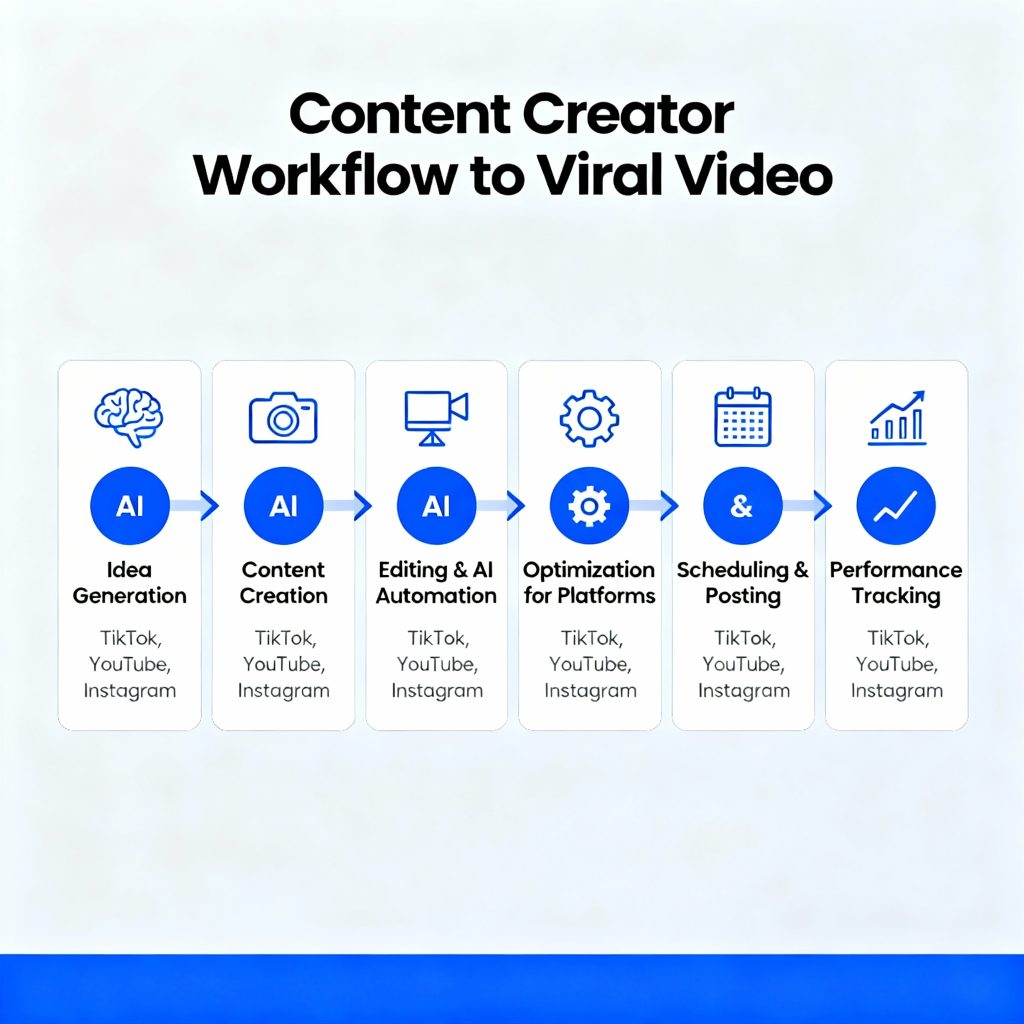
Phase 1: Planning and Research
Define Your Goal and Audience. Before touching any AI tool, crystallize what you want to achieve. Are you building brand awareness, driving product sales, or growing your social media following? Understanding your target audience’s interests, pain points, and content consumption habits shapes every subsequent decision.
Conduct Strategic Keyword Research. Use tools like Google Keyword Planner, TubeBuddy, or VidIQ to identify high-volume, low-competition keywords in your niche. Analyze competitor videos that are performing well to understand what topics resonate with your target audience.
Phase 2: Content Creation and Scripting
Craft a Compelling Script. Your script is the foundation of your video. Start with a powerful hook that grabs attention in the first 3 seconds. Use the Context-Lean-Contrast framework: immediately establish what the video is about, create intrigue with a surprising fact or question, and deliver value quickly. AI tools like ChatGPT can help generate initial scripts, but personalize them with your unique voice and insights.
Phase 3: Tool Selection and Generation
Select the Right AI Video Generator. Match your tool to your content type. Runway Gen-4 and Veo 3 excel at cinematic text-to-video production. Synthesia and HeyGen are your best bets for avatar-led presentations. Social media creators love Short.ai and Klap for their ability to instantly transform ideas into viral short-form videos.
Input Your Prompt with Precision. AI video quality depends heavily on prompt specificity. Include the 5S elements: Subject (what’s in the frame), Setting (location/environment), Style (visual aesthetic), Story (what happens), and Sound (audio description). Be concise and specific: “A young entrepreneur walks confidently through a modern co-working space, morning sunlight streaming through floor-to-ceiling windows, cinematic style” performs better than vague descriptions.
Generate Multiple Variations. Never settle for your first generation. The most successful creators produce 3-5 variations of each scene and select the best. This systematic approach outperforms perfectionism. Most AI tools allow you to iterate quickly—use this to your advantage.
Phase 4: Post-Production and Optimization
Edit and Enhance. Raw AI output rarely goes viral without refinement. Use editing platforms like CapCut, Premiere Rush, or built-in AI editors to add captions, background music, transitions, and effects. Captions are non-negotiable—85% of social media videos are watched without sound.
Optimize for Each Platform. Resize and reformat your video for different platforms. TikTok and Instagram Reels require 9:16 vertical format, while YouTube Shorts supports both vertical and square. Tools like Klap and OpusClip automate this repurposing process.
Create Attention-Grabbing Thumbnails. Thumbnails significantly impact click-through rates. Use bold text overlays, high contrast colors, and expressive faces or intriguing visuals. Your thumbnail should create a curiosity gap that compels viewers to click.
Viral Video Strategies That Actually Work in 2025
Understanding what makes content go viral gives you a strategic advantage in an oversaturated market.

Attention-Grabbing Techniques
Master the 3-Second Hook. Research analyzing 1,000+ viral videos confirms that the first 3 seconds determine success or failure. Use pattern interrupters—unexpected visuals or statements that break the scroll. Bold questions that create curiosity gaps (“What happens if you eat nothing but bananas for a week?”) trigger our psychological need to resolve incomplete information.
Create Contradictions and Contrast. Analysis of top-performing content reveals that contradictions are remarkably effective. Hooks like “I’m scared, but this is worth it” or “Zero followers 3 months ago, 211K today” create unresolved tension that our brains find irresistible. Surprising timeframes (“Three years of progress in 30 seconds”) trigger strong dopamine responses.
Front-Load Value. Don’t save your best insight for the end. In short-form content, you have 4 seconds before attention drops. Deliver your first “aha” moment immediately to earn 30 more seconds of attention. State your value proposition upfront: “Here’s how to cook perfect rice every time” works better than building to a reveal.
Content Format and Authenticity
Embrace Short-Form Video Dominance. Short-form video content continues to reign supreme in 2025. Platforms prioritize videos under 60 seconds, with 85% of viewers preferring content under 15 seconds. Short-form content earns 2.5 times more engagement than long-form video. Use AI clip generators like Klap or OpusClip to transform longer content into multiple viral shorts.
Leverage Authenticity Over Perfection. Today’s audiences crave raw, relatable content over polished corporate videos. Behind-the-scenes footage, authentic storytelling, and user-generated content build trust and relatability. AI-generated content works best when it feels human—add your personality through custom voiceovers or authentic commentary.
Technical Optimization Strategies
Use Sound Strategically. Viral trends in 2025 are increasingly audio-driven. Trending music, sound effects, and voiceovers significantly boost discoverability. Platforms like TikTok and Instagram prioritize content using trending sounds. Tools like CapCut and Premiere Pro offer auto beat-syncing that matches cuts to music rhythm.
Embrace the AI Aesthetic. Rather than trying to hide AI-generated elements, lean into the unique visual style AI creates. Audiences increasingly recognize and appreciate AI-generated content when it’s creative and entertaining. The goal isn’t to fool viewers into thinking content is real, but to create intriguing impossibilities that spark curiosity.
Platform-Specific Optimization Strategies
Each social platform has unique requirements and audience behaviors that demand tailored approaches.
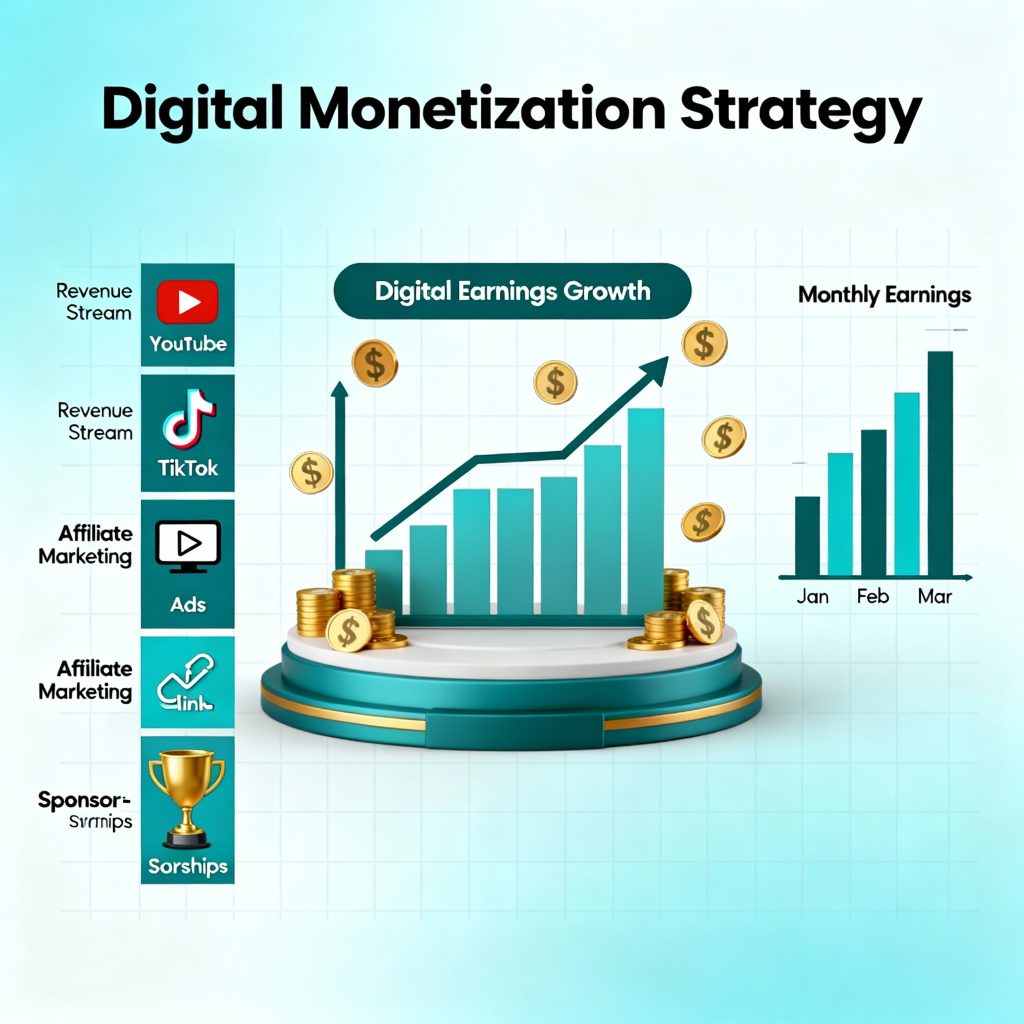
YouTube Strategy. YouTube rewards watch time and viewer retention. Create videos with strong hooks, clear structure using chapters and timestamps, and consistent branding. Optimize titles with keywords (under 60 characters), write detailed descriptions (first 150 characters are critical), and use 5-10 relevant tags. YouTube allows monetization of AI-generated videos as long as they’re unique, original content that provides value. Upload transcripts to improve searchability.
TikTok Approach. TikTok prioritizes entertainment value and trend participation. Post 1-3 times daily during peak hours (typically 6-9 AM and 6-9 PM in your target timezone). Use 5-7 highly relevant hashtags, mixing trending tags with niche-specific ones. Engage with comments immediately after posting to boost algorithmic visibility. TikTok allows monetization through the Creator Fund, which pays $0.02 to $0.04 per 1,000 views.
Instagram Reels Tactics. Instagram rewards consistent posting and strong engagement. Reels should be 15-60 seconds with vertical 9:16 format. Use all available features: text overlays, stickers, effects, and trending audio. Post at least 4-5 Reels per week for optimal growth. Engage with your audience through Stories and respond to comments to boost reach.
LinkedIn Video Best Practices. LinkedIn favors educational and professional content. Videos should be 30-90 seconds, providing clear value or insights. Native uploads perform better than shared links. Use captions since many LinkedIn users watch without sound. Post during business hours (Tuesday-Thursday, 9 AM – 12 PM) for maximum professional audience reach.
Monetization Strategies for AI-Generated Content
Creating viral videos is only valuable if you can convert attention into revenue.
Platform Monetization Programs. YouTube’s Partner Program allows monetization through ads once you reach 1,000 subscribers and 4,000 watch hours (or 10 million Shorts views). YouTube explicitly allows AI-generated content monetization as long as it’s original and valuable. TikTok’s Creator Fund pays based on views and engagement. Instagram offers bonuses for Reels performance and allows product tagging for affiliate sales.
Affiliate Marketing. Promote products relevant to your niche through affiliate links. Amazon Associates, ShareASale, and niche-specific programs offer commissions ranging from 3-50%. Create “product review” or “top 10” videos using AI generators, then include affiliate links in descriptions. This strategy works particularly well for tech products, digital tools, and educational resources.
Sponsored Content and Brand Deals. Once you build an engaged audience (typically 10,000+ followers), brands will pay for promotional content. Rates vary widely—micro-influencers (10K-100K followers) typically charge $100-$500 per post, while larger creators command $1,000-$10,000+. Use platforms like AspireIQ, Creator.co, or direct outreach to connect with brands.
Selling Digital Products and Services. Use viral videos to drive traffic to your own products: online courses, ebooks, templates, or consulting services. AI-generated explainer videos and testimonials can showcase your offerings without expensive production costs.
Subscription and Membership Models. Platforms like Patreon, YouTube Memberships, and Substack allow you to monetize dedicated fans through recurring payments. Offer exclusive content, behind-the-scenes access, or premium tutorials to paying members.
SEO Optimization for Maximum Video Discoverability
Creating great content means nothing if people can’t find it. Video SEO ensures your AI-generated content gets discovered, indexed, and ranked.
Title Optimization. Include your primary keyword naturally in the first 60 characters. Create curiosity while clearly stating the video’s value: “AI Video Generators: Create Viral Content in 5 Minutes (Complete Guide)”. Numbers and brackets increase click-through rates.
Description Strategy. The first 150 characters appear in search results—make them count. Include your primary keyword, secondary keywords, and a compelling hook. Add timestamps for longer videos to enable key moments in search results. Include relevant links and calls-to-action.
Strategic Tagging. Use one primary keyword tag, 3-5 related variations, and 2-3 broader topic tags. Don’t overthink tags—they’re less important than titles and descriptions but still contribute to discoverability.
Thumbnail Excellence. Thumbnails dramatically affect click-through rates, which in turn influence rankings. Use high contrast, bold text (3-5 words maximum), and expressive faces or intriguing visuals. A/B test different thumbnails to optimize performance.
Transcript and Captions. Upload accurate transcripts to help search engines understand your content. Transcripts improve accessibility and provide text for search engines to index. Most AI video platforms can auto-generate captions—always review and correct them for accuracy.
Engagement Signals. Platforms prioritize content that generates engagement. Ask questions in your videos to encourage comments, create polls and quizzes for interactivity, and respond to comments quickly to boost algorithmic visibility. Higher engagement signals quality content to platform algorithms.
Best Practices for AI Video Production Quality
While AI handles heavy lifting, understanding quality principles ensures professional results.
Audio Excellence. Poor audio destroys even the most visually stunning videos. Use AI-generated voiceovers from tools like ElevenLabs or Murf for realistic narration. Layer ambient audio to create depth. Balance audio levels so music doesn’t overpower dialogue. Add snappy sound effects for transitions and text reveals.
Visual Consistency. Maintain consistent color grading, fonts, and branding across your videos. AI-driven LUTs and presets help establish cinematic tones—warm nostalgia, moody drama, or pastel whimsy. Motion typography that pulses, morphs, or syncs to music reinforces key messages.
Pacing and Rhythm. Use jump cuts to eliminate dead space and maintain momentum. Vary shot composition with wide, medium, and close-up perspectives. Match cuts to music beats for a polished feel. Keep transitions simple—too many effects distract from your message.
Start with Image-to-Video. When possible, generate your desired starting image first using tools like Midjourney or DALL-E, then animate it with video generators. This approach is cheaper, faster, and gives more control over the first frame, which influences the entire generation.
Batch Processing for Efficiency. Generate multiple concepts simultaneously rather than perfecting single shots. Monday: plan 10-15 concepts. Tuesday-Wednesday: batch generate 3-5 variations each. Thursday: select the best and create platform-specific versions. Friday: finalize and schedule for optimal posting times.
Common Pitfalls to Avoid
Learning from others’ mistakes accelerates your success.
Over-Reliance on AI Without Human Touch. AI generates content, but humans create connection. Always add your unique perspective, personality, and expertise. Use AI as a co-pilot, not a replacement for strategic thinking.
Ignoring Platform-Specific Requirements. A video optimized for YouTube won’t perform on TikTok. Resize, reformat, and adjust pacing for each platform’s unique audience and algorithm.
Perfectionism Over Volume. Analysis of successful creators reveals that volume beats perfection. The systematic approach of generating multiple variations and selecting the best consistently outperforms attempts to perfect single videos.
Vague Prompting. Generic prompts produce generic results. Specificity is crucial—include detailed descriptions of subjects, settings, styles, stories, and sounds.
Neglecting Audio Completely. Many creators focus solely on visuals and forget that sound design is equally critical. Great audio is your secret weapon in a sea of visually similar content.
Keyword Stuffing and Spam Tactics. Overloading titles, descriptions, and tags with repetitive keywords gets flagged as spam and hurts rankings. Natural integration of keywords performs better.
Forgetting the First Frame Focus. The quality of your first frame influences the entire video generation. Generate 10 variations focusing solely on the ideal first frame before proceeding.
The Future of AI Video Creation
The AI video landscape evolves rapidly, with new capabilities emerging constantly. Current trends point toward unified AI frameworks that handle multiple creative tasks within single platforms. Video generation models are achieving longer coherent sequences—some now support multi-scene narratives spanning several minutes.
Interactive and AR video elements are making waves, allowing viewers to virtually try products or engage with content in immersive ways. Character consistency across multiple shots, once a major limitation, has dramatically improved.
For creators with video production backgrounds, AI tools represent amplification rather than replacement. The competitive advantage increasingly lies in strategic thinking: understanding audience psychology, mastering platform algorithms, and crafting compelling narratives that AI executes efficiently.
Taking Action: Your AI Video Success Blueprint
The explosive growth of AI video generators creates unprecedented opportunities for creators, marketers, and businesses willing to embrace this technology. Success requires combining powerful AI tools with strategic thinking, audience understanding, and consistent execution.
Start by selecting one AI video generator that matches your content goals. Invest time learning its capabilities deeply rather than jumping between multiple platforms. Develop a systematic workflow: plan content strategically, batch create variations, select the best performers, and optimize for each platform’s unique requirements.
Focus on creating value for your specific audience rather than chasing viral trends indiscriminately. The most successful creators combine AI efficiency with authentic storytelling and genuine expertise. Use the tools to amplify your message, not to create hollow content.
Commit to consistent posting—3-5 videos per week minimum across your chosen platforms. Analyze performance data religiously: which hooks work best, what topics resonate, when your audience engages most actively. Iterate based on data, not assumptions.
The barrier to creating professional video content has never been lower, but the bar for what constitutes “good enough” continues rising. AI video generators give you the tools to compete—your strategic vision and authentic voice make you irreplaceable.
The future of content creation is here. Your move.
